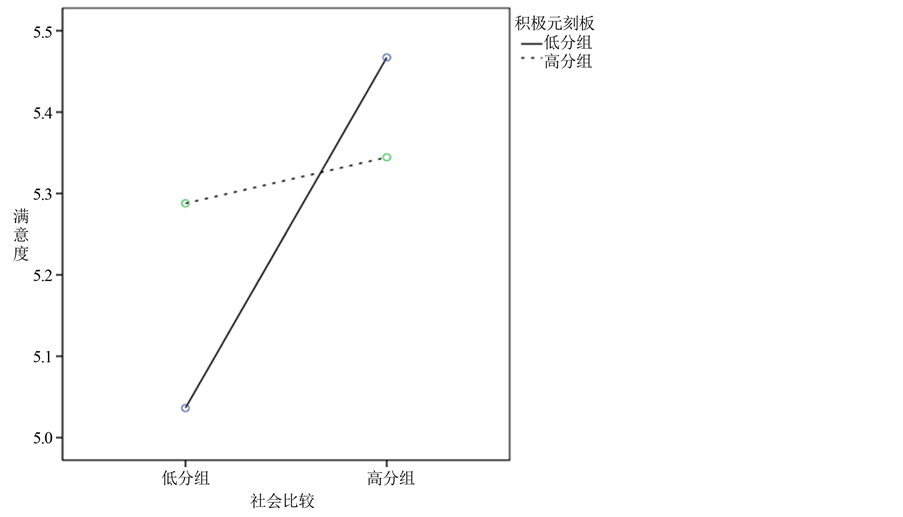1. 引言
2007年6月,国务院批准了重庆市与成都市建立统筹城乡综合配套改革试验区,在统筹城乡过程中,重庆市与成都市纷纷出台政策,给予有条件的农村居民城镇居民的身份,相对于一直在城市生活的居民,这部分从农村转出来的人即成为新市民。重庆市规划,从2007~2020年的13年间,将有1000万农村居民转为城市户口成为市民,而这1000万人能否顺利地融入城市对于其自身的发展幸福,对于成渝地区的改革稳定以及国家统筹城乡政策的高效运行都具有十分重要的意义。
社会融入(social integration)是指社会中某一特定人群,融入社会主流群体,与社会主流群体同等地获取经济社会资源,并在社会认知上去差异化的动态过程(崔岩,2012)。在我国,研究者从不同的维度对社会融入加以考察,风笑天(2005)从环境、生活等4个维度考察了三峡移民在迁入地的社会融入状况,具体表现为是否怀念搬迁前居住的地方、对家庭收入的满意状况、对搬迁后的邻里关系满意状况等9个指标;张文宏等人(2008)则用14个指标考察了上海地区的城市新移民社会融合结构,包括本地语言掌握程度、本地人身份认同程度、社会交往范围、社会心理距离、社会满意度等;杨黎源(2007)则从邻里关系、困难互助、风俗习惯、安全感等8个角度分析流动人口的社会融入状况。这些研究中,虽然涉及的群体不同,对社会融入的维度理解也有差异,但是概括起来,都涉及行为方式、社会交往、身份等多个心理维度。研究显示,外来人口,尤其是农民工群体的社会融入与政治、经济、社会、个体自身等多种因素密切有关(陈世伟,2008;董金秋、孟祥林,2010;黄晓燕,2010;梁波,王海英,2010;刘建娥,2010;陆林,2007;吕柯,2004;徐莺,2006),而户籍因素在其中起到了核心作用(李强,2011;张展新,2007)。成渝两地在统筹城乡试验过程中给予新市民城市户籍,而新市民融入城市的户籍障碍的消失是否意味着他们会顺利地融入到城市当中依旧有待科学的考察。
社会比较(social comparison)是人类在互动过程中普遍存在的社会心理现象,可以分为上行比较,平行比较和下行比较。当个体遭遇消极生活事件时,个体的自尊、心理健康水平就会下降,这时个体倾向于通过下行比较来维持其自尊和主观幸福感(TA Wills, 1981)。谢一帆(2010)研究发现,农村中学教师社会比较与工作满意度紧密相关,并且,个人主观的生活满意感是社会比较的结果(王璇,2009)。根据付宗国等人(2004)的研究,来自内群体的上行比较会提高自我评价,而来自外群体的上行比较则会降低自我评价。在社会互动中,新市民与老市民社会比较的结果对其自我评价和生活的满意度可能有着重要的影响。新市民的满意度直接决定着人们对当地的认同程度,是其城市融入的重要指标。新市民由农村进入城市,与老市民的社会比较可能直接影响着其与老市民的接触意愿、交往特征以及在城市的满意度。
元刻板印象(meta-stereotypes)指个体关于外群体成员对其所属群体所持刻板印象的信念(Vorauer, Main, & O’Connell, 1998),是影响群体间关系的重要因素,会在群体接触(直接或者间接接触)情境中激活,进而影响不同群体之间的社会互动特征。邹荣(2012)指出,元刻板印象具有情境性的特征,随比较的外群体的变化而发生变化(Lichtenberger, 2004)。李晓巍等人(2008)指出,流动儿童往往通过与城市儿童在积极品质(如勤劳、节俭)的对比上获得对自身的积极知觉,点明了社会比较与元刻板印象存在着相互作用。研究发现,人们倾向于高估元刻板印象的消极性,认为外群体成员对自己进行消极评价(Krueger, 1996; Torres & Charles, 2004),尤其是低社会地位群体更容易体验到来自外群体的消极评价(盂小红,2013),并且,该现象会导致人们以消极的刻板印象看待自己(Vorauer et al., 1998)。而根据盂小红(2013)的研究,消极的元刻板印象会引发群际焦虑,进而阻碍群际间交流,加大群体间的心理距离,对社会融入产生消极影响。可见,新市民持有消极元刻板印象,会加剧其在与老市民社会比较过程中的对比效应,从而造成对生活状态的不满足,影响其社会融入水平。
本研究旨在从心理学视角揭示新市民的社会融入特征,构建关系模型,分析社会比较,满意度和元刻板印象在新市民社会融入中发挥的作用。结合以往文献,本文提出:满意度为中介变量,社会比较通过满意度影响社会融入,即社会比较得分越高,满意度越高,社会融入状况越好;元刻板印象对社会比较和满意度的关系起调节作用,且对于持积极元刻板印象的个体,其社会比较得分越高,则满意度越高,而对于持消极元刻板印象的个体,其社会比较得分越高,则满意度越低。
模型如图1。
2. 研究方法
2.1. 研究对象
采用整群抽样方式,抽取了重庆市主城7个区(北碚区、沙坪坝区、南岸区、渝北区、九龙坡区、巴南区、江北区),成都市3个区(新都区、成华区、金牛区)的新市民,共发放2158份问卷,回收有效问卷1742份。
样本中重庆户籍的占64.8%,成都户籍的占34.0 %;年龄分布在10~89岁,缺失值为5,平均36.01岁(SD = 14.03)。此外,调查对象男女比例各占46.8%和53.2%,缺失值为6。接受调查的新市民学历为高中者居多,占40.7%。职业类型以其他(包含无职业)和商业服务业为主,前者占48.2%,后者为18.0%。
2.2. 研究工具
2.2.1. 社会融入心理量表
在理论分析的基础上,结合对新市民的访谈,构建了七维度新市民社会融入问卷。对问卷采用因素分析,删除负荷度低于0.40、共同度低的题项,最终保留33道题,其中身份认同维度有5个题项,社会网络维度有5个题项,方言维度有3个题项,主人翁意识维度有7个题项,对地理文化的熟悉度维度有3个题项,依恋维度有6个题项,生活方式维度有4个题项。问卷采用七点评分,低于4分表示没有融入城市,高于4分表示已经融入城市。问卷α系数为0.786,表明信度良好。
2.2.2. 社会比较倾向量表(中文版)
使用王明姬等(2006)修订的中文版社会比较倾向量表。该量表共11道题,包括2个维度,能力和观念,其中能力维度6题,观念维度5题。问卷采用7点评分,1表示非常不同意,7表示非常同意,该量表信度为0.752,表明信度良好。
2.2.3. 人脸量表
采用Andrews 和Withey(1976)编制的人脸量表调查新市民生活满意度。人脸量表是研究幸福感的非言语式量表,仅由1题构成,在该量表中有7副人脸,各人脸表情各异,从高兴到不高兴按顺序依次排列,新市民被要求选出最接近其生活感受的人脸,按照选择的人脸转化成数字1~7以评分,其中最不高兴为1分,最高兴为7分。
2.2.4. 元刻板印象量表
根据以往研究(盂小红,2013;邹容,2012),参照新闻媒体报道,共收集100个描写新市民的词汇,其中包括积极词汇50个,消极词汇50个。再邀请专家学者对元刻板印象词进行考察,删除掉重复、低频、模糊的词语,最终剩余54个元刻板印象词,包括27个积极词汇,27个消极词汇,将54个词语以随机次序排列,构建了新市民的元刻板印象量表。
在元刻板印象量表中,新市民要选出其所认为的符合老市民对新市民看法的词语,并在词语后面的括号中打“√”(比如若被调查者认为老市民觉得新市民“勤劳”,则在“勤劳”后面的括号中打“√”)。
3. 结果
3.1. 新市民社会比较、满意度、社会融入及元刻板印象状况
通过对1742份问卷的分析,发现:
在本量表中得分大于等于4说明新市民已融入城市,由表1可以看出,新市民中大多数已经融入城市。
本研究发现新市民在社会比较上的平均得分为4.10 (SD = 0.89),即新市民会偏向与老市民进行社会比较;满意度的平均得分为5.23 (SD = 1.46),表明新市民的生活满意度较高;新市民的社会融入显示得分为4.83 (SD = 0.49),说明新市民的融入程度并不高(如表2)。
由表3可以看出,平均每名新市民会选出9.06(SD = 6.18)个积极元刻板印象词,4.19(SD = 4.18)个消极元刻板印象词。
3.2. 新市民社会融入与人口学变量的二元逻辑斯蒂回归分析
本文采用二元逻辑斯蒂回归分析方法(binary logistic regression)分析新市民社会融入与人口学变量的关系,Logistic回归类似于线性回归模型,但更适用于因变量为二分变量的模型,可以根据一组预测变量的值预测某种特征或结果是否存在。并且,在控制其他自变量的情况下,我们可以对某一特定自变量对因变量变化的影响进行分析。二元逻辑斯蒂回归模型中(odds ratio)估计的几率比,即Exp(B)表明当自变量取值每增加一个单位时,属于该组的发生比率是属于参照组的发生比率的Exp(B)倍,分析结果见表4。
如图所示,人口学变量中年龄和学历对社会融入的影响显著(年龄:p < 0.001;学历:p < 0.05)。即在控制其他变量的情况下,年龄每增加一个层次,社会融入的程度增加1.027倍,学历每上升一个层次,

Figure 1.The relationship model of social comparison, satisfaction,social integration and meta-stereotype
图1. 社会比较、满意度、社会融入及元刻板印象的关系模型图

Table 1. The state and percentage of social integration for new citizens
表1. 新市民的社会融入情况及百分比

Table 2. The average score of the social comparison, satisfaction and social integration
表2. 新市民社会比较、满意度、社会融入的平均分和标准差

Table 3. The state and percentage of meta-stereotype
表3. 元刻板印象状况及百分比

Table 4. Binary logistic regression analysis on social integration and demographic variables
表4. 新市民社会融入与人口学变量的二元逻辑斯蒂回归分析
社会融入程度为原来的0.865倍。
3.3. 影响新市民社会融入的因素分析
3.3.1. 社会比较与社会融入的关系验证
由表5可以看出,社会比较对满意度有显著的预测效果(β = 0.092,p < 0.001),即越经常同老市民进行社会比较的新市民就越满意城市的生活。
3.3.2. 满意度与社会融入的关系验证
满意度对社会融入的预测效果,由表5的M2可以看出来,就满意度而言,满意度对社会融入有显著的正向预测效果(△R2 = 0.053, β = 0.230, p < 0.001)。也就是说,新市民对城市的总体感受越满意,就越容易融入城市。
3.3.3. 满意度的中介效果验证
根据温忠麟等人(2004)总结的中介效应的检验程序,完全中介效果应符合四个条件:1) 前置变量对中介变量具有显著的预测效果;2) 中介变量对结果变量具有显著的预测效果;3) 前置变量对结果变量有显著的预测效果;4) 同时将前置变量与中介变量加入回归模型中,前置变量的预测效果会变得不显著。
由表5可看出,1) 社会比较(前置变量)对满意度(结果变量)有显著的预测效果,第一个条件成立。2) 满意度(中介变量)对社会融入也有显著的预测效果,第二个条件成立(见M2)。3) 社会比较对社会融入具有显著的预测效果(β = 0.100, p < 0.001),第三个条件成立(M1)。4) 在回归模型中同时放入社会比较及满意度,结果发现满意度对社会融入的预测效果维持显著(β = 0.148, p < 0.001),且社会比较的预测结果也维持显著(β = 0.096, p < 0.001),第四个条件仅部分成立(M3)。根据James与Brett的观点,当前置变量完全通过中介变量而间接影响到结果变量,即完全中介效果(complete mediation)。当前置变量不仅通过中介变量而间接影响到结果变量,而且会直接影响到结果变量,这叫部分中介效果(partial mediation)。本研究中,满意度可以作为社会比较与社会融入的部分中介变量。
3.4. 元刻板印象的调节效果验证
按照温忠麟(2005)调节效应的分析方法,分析结果见表6。在元刻板印象对社会比较与满意度之间关系的调节效果验证上,依序在回归模型中放入前置变量、调节变量及交互作用变量,结果发现:社会比较与消极元刻板印象的交互作用对满意度没有显著的预测效果(β = 0.034, p > 0.05);社会比较与积极元刻板印象的交互作用对满意度有显著的预测效果(β = −0.052, p < 0.05)。由此观之,消极元刻板印象对社会比较与满意度的关系,并无显著的调节效果;但积极的元刻板印象对社会比较与满意度的关系,则有显著的调节效果。
为了进一步了解调节效果的形态,本研究采用了Kuo和Tsaur的做法,将社会比较和积极元刻板印

Table 5. Relevance of satisfaction, prior variable and social integration
表5. 满意度、前置变量及社会融入的关联性
注:***p < 0.001;表中未打( )的为标准化β系数;M1表示将社会比较和社会融入同时放入回归模型中;M2表示将满意度和社会融入同时放入回归模型中;M3表示将社会比较、满意度和社会融入同时放入回归模型中。

Table 6. The moderating role meta-stereotype plays between social comparison and social integration
表6. 元刻板印象在社会比较和满意度之间的调节效果
注:*p < 0.05;**p < 0.01;***p < 0.001;表中未打( )的为标准化β系数。
象按平均数将受访者分成高分组与低分组两组。如此可以形成“高高、高低、低高、低低”四种组合。若将这四种组合在满意度上的平均数算出,进行绘图,结果见图2。
由图2可发现,就积极元刻板低分组的受访者而言,社会比较对满意度有正向的预测效果,并且达到边缘显著(p = 0.056)。换言之,对于元刻板印象较低积极水平的新市民,经常与老市民对比,可以使他们对城市的总体感受越满意。但是,就积极元刻板高分组的受访者来说,社会比较对满意度没有预测效果,也就是说,元刻板印象是较高积极水平的新市民,无论是否经常与老市民对比,他们对城市的总体感受总是比较满意。
4. 讨论
4.1. 新市民社会融入程度偏低的原因
心理上融入城市需要一个过程。自2007年实施城乡统筹改革至今,只有6年的时间,对于新市民来说,摆脱农村的过往生活实现其对城市的社会融入无法一蹴而就。
在互动过程中普遍存在的社会心理现象,当个体自我具有不确定性时,人们会不可避免地进行社会比较来确定自己的位置,了解和评价自我。彭秀杰在对上海新市民研究中发现,户籍的改变并没有使新市民实现角色内涵的完整转型,他们并没有“市民”的身份认同,而是处于同原城镇居民和农民、外来“农民工”的参照比较当中,不明确自身定位(贺建平、胡其涛、许琳,2011)。本研究发现新市民会偏向与老市民进行社会比较,虽然新市民在制度层面已经与老市民没有差异,但是由于进入城市的时间短,所处的职业地位较低,经济社会地位也比较低,因此在社会比较中处于劣势地位。这种“弱势感”也会降低其社会融入水平。

Figure 2. The moderating role positive meta-stereotype plays bet ween social comparison and social integration
图2. 积极元刻板印象对于社会比较与满意度的调节效果
4.2. 人口学变量对社会融入的影响
年龄较小的群体比年龄较大的群体社会融入程度更低。这与以往的某些研究存在一致性(刘传江,2008;刘建娥,2010),因为年轻群体对城市体系下更高水平的教育、就业、婚姻等有突出的需求,而城市在就业等方面对年轻一代的要求要高于年长一代,但自身已有的条件却无法满足自身需求和社会要求,理想与现实的差距限制着他们的社会融入;而年龄较大的新市民对城市与农村生活状况差异的感受明显,对城市生活表现出更高的满意感,因而能够更好地实现社会融入。
学历与新市民的社会融入呈负相关,这与其社会融入意愿有关。从社会比较角度来说,学历越高者自尊水平越高,在向上的社会比较中更容易产生对比效应,会产生比学历较低者更大的心理落差。值得关注的是,在新市民中学历越高者可能更容易获得收入较好的工作,因此具备更好地融入城市的客观条件。
4.3. 元刻板印象对社会比较与满意度的调节作用
研究指出,如果社会比较信息威胁个体的积极自我概念,个体会回避社会比较(Klein, Blie, & Janze, 2001)。Oldenhuis (2007)等认为,元刻板印象多为消极时,人们更倾向于采取消极的行为。持有消极元刻板印象的新市民,由于其消极刻板印象会影响自己的自我概念,因而更倾向于减少社会比较达到保护积极自我的目的,这样就不能产生调节作用。
另一方面,基于认知一致性,如果我们邻近的人是我们不喜欢的,会引起心理上的焦虑,认知压力也会迫使我们改变对他们的看法或者引入新的认知因素以达到内心平衡(金盛华,2005)。新市民在社会比较中持有消极的元刻板印象,则会产生焦虑而无法实现其自我提高和自我满足。为了避免焦虑情绪,保证自己的生活满意感,他们总是试图避免消极元刻板印象在社会比较和满意度中发挥调节作用,从而产生了消极元刻板印象不会起到显著调节作用的结果。
根据访谈结果,持有较高积极水平元刻板印象的新市民或在经济上显得宽裕,或在思想上更满足于当前生活,二者都对当前的生活很满意,因而即使进行社会比较也不会使满意度显著提高或者降低。因此,较高水平的积极元刻板印象在社会比较和满意度之间调节作用无法达到显著。而持有较低积极水平元刻板印象的新市民对当前生活比较满意,生活态度积极,可以通过社会比较进一步实现自我提高和自我满足(Tesser,Millar& Moore, 1988)。因此,较低水平的积极元刻板印象在社会比较和满意度之间调节作用显著。
4.4. 满意度是部分中介而非完全中介的原因
一方面,新市民的社会比较通过满意度作用于社会融入。Feastinger认为,人们在生活中缺乏用于自我评价的标准时,就把自己的能力、观点与周围的人进行对比,实现自我评估的需要。个人主观的生活满意感是社会比较的结果(王娟、陈涛,2007)。新市民进入城市后,会在经济水平、生活方式等方面与老市民进行比较,比较的结果不满意就会影响其融入城市。另一方面,新市民的社会比较会直接作用于社会融入。新市民将自己的处境和地位(包括能力、观点、收入水平)等各方面与老市民进行比较评估,如果经过比较,发现自己在生活状况、职业水平等方面较老市民差,就会产生一定的心理落差,这种心理落差使得新市民更难融入到老市民的社会圈子,即是说社会比较的结果将直接影响新市民的社会融入。因此,满意度在社会比较和社会融入中起部分中介效应。
5. 结论
本研究得出以下结论:有86.5%的新市民已经融入城市,但社会融入程度不高;新市民的社会融入受年龄、学历的显著影响:年长的新市民较年轻者更容易实现社会融入,学历越低越容易实现社会融入;社会比较通过满意度的部分中介作用影响社会融入,即越经常与老市民进行比较的新市民,对城市的总体感受就越满意,社会融入程度也就越高;元刻板印象中的积极元刻板印象对社会比较和满意度的关系起调节作用,消极元刻板印象调节作用不显著。

NOTES
*通讯作者。